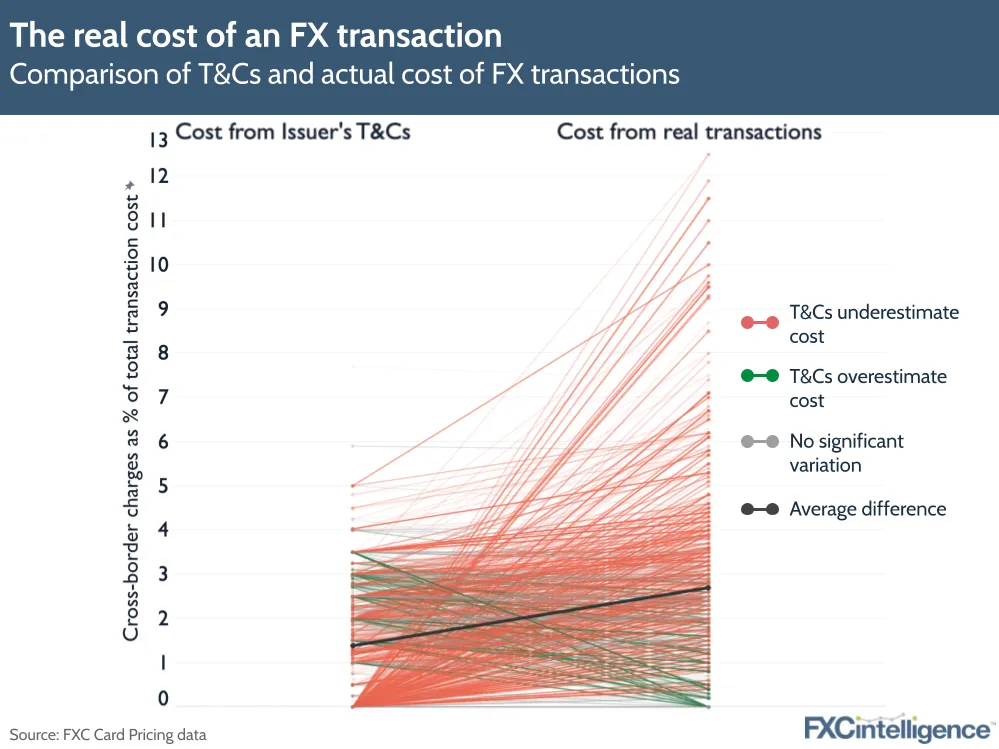Our global card and transactions dataset, covering 110 countries and more than 700 issuers, tracks the cost of using debit and credit cards for cross-border transactions. In addition, we track costs that issuers disclose in their T&Cs and compare these to the real all-in cost based on actual transactions.
Approximately 45% of card programs charge a higher fee than what is reported in their issuer’s official T&Cs. Yes you read that right.

On average, the cost of transactions is 50% higher than the cost disclosed in the issuers’ T&Cs; this can mean the cost of a transaction can easily be 3-5 percentage points higher than what is stated in the T&Cs.
In an age where customers are faced with an increasing number of payment options abroad, it remains difficult for them to effectively gauge which payment options are the cheapest. This can easily lead to dissatisfied customers and large numbers of complaints, not only for the card issuer, but also for merchants accepting payments on their website as it is not always clear for customers where the additional costs come from.
These hidden costs can be due to several causes, including additional network fees; currency exchange rates that are significantly higher than mid-market rates or additional processing fees that might not be disclosed.
This problem offers an opportunity for merchants and payment processors to provide customers with different solutions. For example, merchants can provide the customer with the ability to pay in their home currency – while unlocking a significant margin opportunity. Transparency, for both merchants and card issuers, can significantly improve the overall customer experience.
In future newsletters, we will be breaking down the drivers of FX transactions’ costs and how regulations on transparency can impact these costs. Stay tuned.


